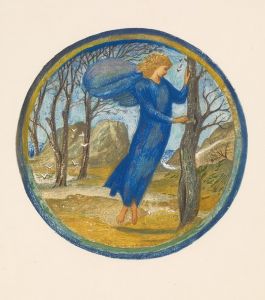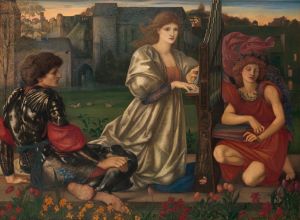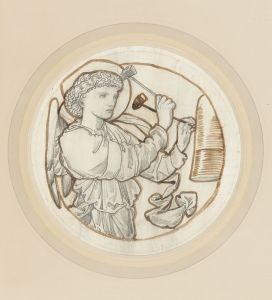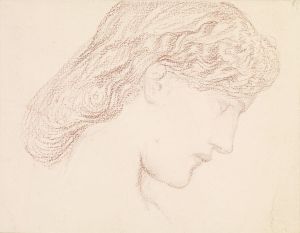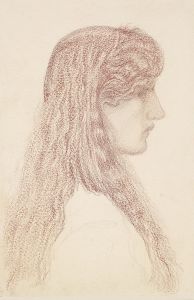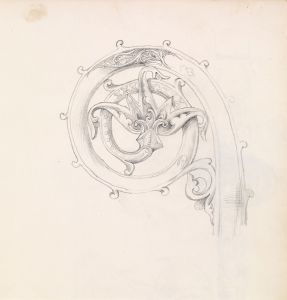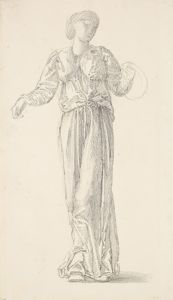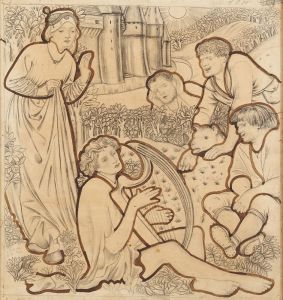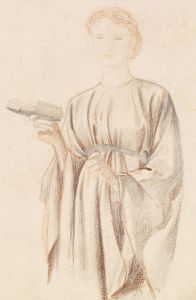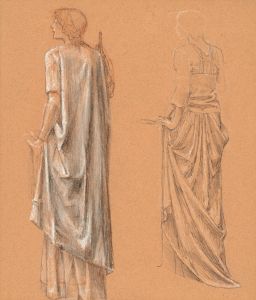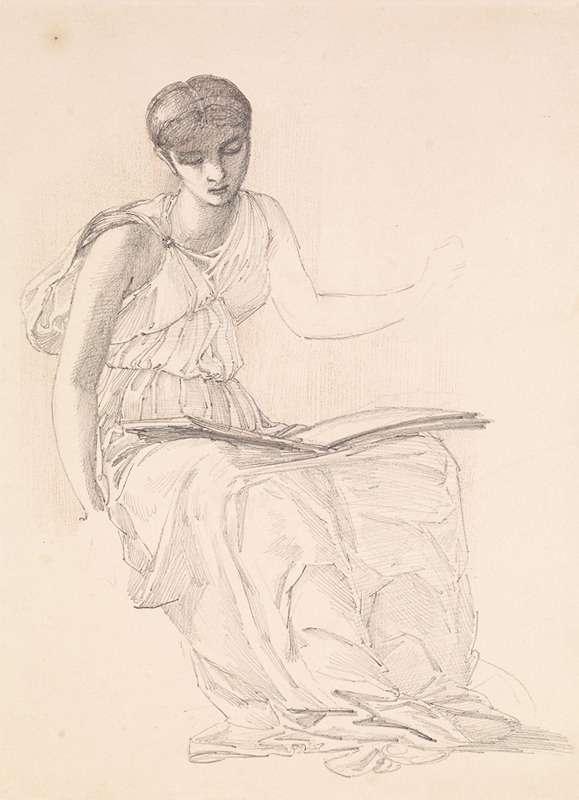
The Fates – Study of Drapery for Figure of Clotho
A hand-painted replica of Sir Edward Coley Burne-Jones’s masterpiece The Fates – Study of Drapery for Figure of Clotho, meticulously crafted by professional artists to capture the true essence of the original. Each piece is created with museum-quality canvas and rare mineral pigments, carefully painted by experienced artists with delicate brushstrokes and rich, layered colors to perfectly recreate the texture of the original artwork. Unlike machine-printed reproductions, this hand-painted version brings the painting to life, infused with the artist’s emotions and skill in every stroke. Whether for personal collection or home decoration, it instantly elevates the artistic atmosphere of any space.
"The Fates – Study of Drapery for Figure of Clotho" is a notable work by Sir Edward Coley Burne-Jones, an influential British artist associated with the Pre-Raphaelite Brotherhood. This particular piece is a preparatory study focusing on the drapery for the figure of Clotho, one of the three Fates in Greek mythology. The Fates, also known as the Moirai, are mythological figures who control the destinies of both mortals and gods. Clotho, specifically, is the Fate responsible for spinning the thread of life.
Burne-Jones, born in 1833 and passing in 1898, was a key figure in the later phase of the Pre-Raphaelite movement, which sought to return to the detail, intense colors, and complex compositions of Quattrocento Italian art. His works often feature medieval and classical themes, with a particular emphasis on mythological and literary subjects.
The study of drapery for Clotho is a testament to Burne-Jones's meticulous approach to his art. Drapery studies are essential in understanding how artists like Burne-Jones approached the depiction of fabric and clothing, which play a crucial role in the overall composition and aesthetic of their works. These studies allow artists to experiment with the flow and texture of fabric, ensuring that the final piece achieves a sense of realism and dynamism.
In "The Fates – Study of Drapery for Figure of Clotho," Burne-Jones demonstrates his skill in rendering the intricate folds and movement of fabric. The study likely served as a preparatory work for a larger, more finished piece, where Clotho would be depicted alongside her sisters, Lachesis and Atropos. Such studies were common practice among artists of the time, providing a foundation upon which the final composition could be built.
Burne-Jones's interest in classical mythology and his ability to imbue his subjects with a sense of otherworldly beauty are evident in this study. The careful attention to the drapery's texture and form reflects his dedication to achieving a high level of detail and accuracy in his work. This focus on drapery also highlights the influence of Renaissance artists on Burne-Jones, who often looked to the works of masters like Botticelli for inspiration.
The study is an example of Burne-Jones's broader artistic practice, which involved extensive preparatory work before completing a final piece. This method allowed him to refine his ideas and techniques, ensuring that each element of the composition was carefully considered and executed. The drapery study for Clotho is just one of many such preparatory works that provide insight into Burne-Jones's creative process and his commitment to his craft.
Overall, "The Fates – Study of Drapery for Figure of Clotho" is a significant work that showcases Sir Edward Coley Burne-Jones's skill and dedication as an artist. It offers a glimpse into the meticulous preparation that underpinned his larger, more complex compositions, and highlights his ability to bring mythological subjects to life with grace and precision.





